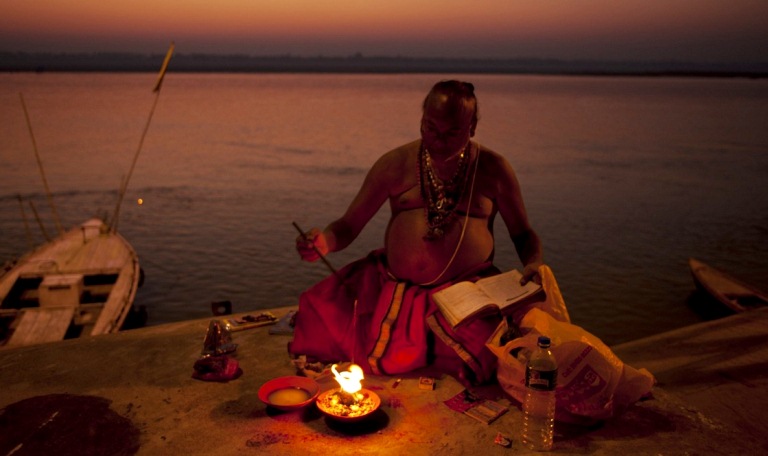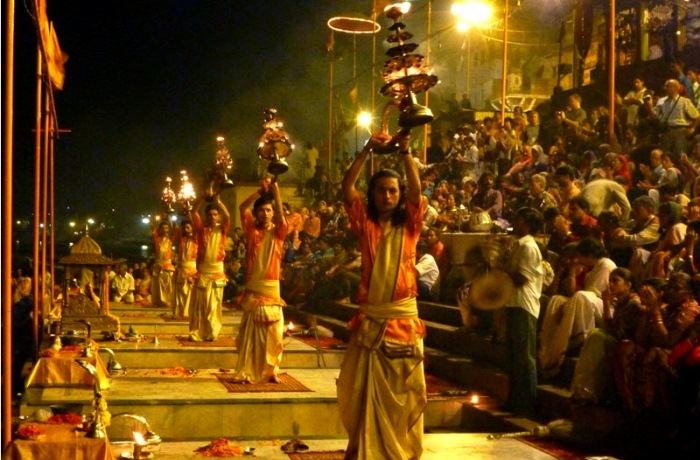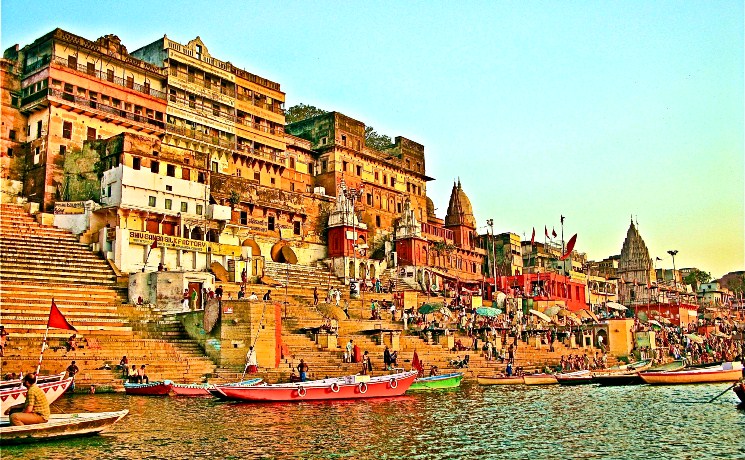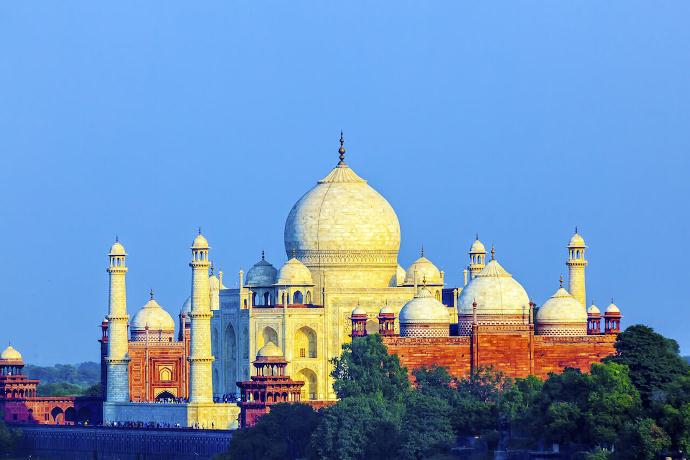
RAJASTHAN- The state of Rajasthan is associated with the astounding legends of heroism and romance still echoes from its royal fort and palaces that stands majestically on hilltop to narrate the tale of a chivalry and audacity. The magic of vibrant Rajasthan - its rich heritage, colorful culture, exciting desert safaris, shining sand-dunes, amazing variety lush forests and varied wildlife - makes it a destination nonpareil. Rajasthan is often portrayed as one vast open-air museum, with its relics so well preserved that it delights even the most skeptical traveler. Rajasthan India comprises of forts and palaces, wildlife's. All this makes Rajasthan a wonderful destination to explore. Travel Rajasthan in order to explore the exquisite craftsmanship of bygone era. Tourism in Rajasthan makes state one of the most visited state of India.
DELHI- New Delhi, capital of India is a mix of the ancient and modern architecture. This 3rd largest city of India unwinds a picture rich with culture, architecture, and human diversity. Divided in two parts, Old Delhi & New Delhi, the city is a travel hub of Northern India and exerts a beguiling charm on visitors.
UDAIPUR- One of the most beautiful cities of Rajasthan, located on the banks of Lake Pichola, also known as a 'Jewel of Mewar'. The most romantic city of India can take the tourist into paroxysm of heaven. The center of attraction vibrates around the shimmering blue waters and the royal white marble palaces constructed with unique artistic insight.
JODHPUR- Popularly called the Blue City of Rajasthan; Jodhpur is second largest city in Rajasthan after Jaipur. It is an island of marble palaces from the desert by an immense wall, with eight gates facing different directions. Jodhpur is famous for its magnificent fort and palaces. The city is situated at the edge of the Thar Desert with Jaisalmer on its west, Bikaner on its north side.
JAISALMER- Popularly known as the Desert City of Rajasthan, and is a paradise of the desert kingdom. It sets a image of deserted land with camel swiftly moving on the golden sands. The city is almost enticing and for domestic travelers as it is to foreign tourists. Standing in pride with its colossal forts, palaces and havelis, Jaisalmer showcases the artistic sense of the Rajput kings.
BIKANER- Located in the north western part of the state, Bikaner has a rich historical tradition and thousands of tourists from all over the year come here to get a feel of the rich tradition and culture. Bikaner attracts thousands of travelers for its rich historical tradition and culture. The city consists of beautiful forts, castles, religious shrines and other historical monuments.
JAIPUR- Jaipur is remarkable for its marvelous architecture and town planning as it is for the lively spirit of the people who inhabit it. The city presents a unique synthesis of culture that has to be experienced in order to be appreciated. The old Jaipur painted in Pink, the lively spirit of fanfare, festivity and celebration of the people adequately match the colorful and intricately carved monuments.
FATEHPUR SIKRI- Once the capital of the Mughal emperor Akbar, a deserted, red sandstone city built by the Mughal Emperor Akbar in the 16th century. It is built in red sandstone, and is a beautiful blend of Hindu and Islamic architectural elements.
AGRA- The Land of culture and heritage. Agra is the city of the inimitable Taj Mahal. Agra is famous for its marble inlay work, leather goods, brasswares, finely worked precious and semi-precious stone jewellery and ornate zari embroidery.
ORCHHA- The meaning of the place, Orchha is a hidden place and it perfectly justifies this small village hidden by the forests. Its grandeur has been captured in stone, frozen in time a rich legacy to the ages. It is a major tourist attraction of Madhya Pradesh because of the number of beautifully built palaces, temples and cenotaphs built in the 16th and 17th centuries reflecting the rich Bundela art and architecture.
KHAJURAHO- It is a city well known for its temples and sculptures. The exuberance of Indian spirit represents a paean to life, love, to joy-perfect in execution and sublime in expression. The Khajuraho temples are internationally famous for the erotic sculptures that adorn the walls.
VARANASI- It is one of the oldest living cities in the world. It probably derives from the two rivers that flank the city, the Varuna to the north and the Asi to the south. Many still use the anglicized forms of Banaras or Benares, while pilgrims refer to Kashi. The city of Banaras is situated on the west bank of the holiest of all Indian rivers, the Ganga or Ganges. The relationship between the sacred river and the city is the essence of Varanasi - 'the land of sacred light'.
Tour Destination- Delhi - Udaipur - Jodhpur - Jaisalmer - Bikaner - Jaipur - Agra - Orchha - Khujurao - Varanasi
Travel Duration-14 Nights/15 Days
DAY 1: DELHI
Arrive in Delhi and later transfer to the hotel. After freshen up, enjoy full day city tour of Old Delhi & New Delhi visiting.
RED FORT- This is a magnificent fort with beautiful artwork of red sandstone on the banks of river Yamuna. It is a huge complex of gardens and pavilions and marble palaces.
JAMA MASJID- This is the largest mosque in India, located opposite to the Red Fort, it was again the great Mughal Emperor Shah Jahan behind this architectural masterpiece.
RAJ GHAT- Built on the banks of the legendary Yamuna, which flows past New Delhi, Raj Ghat-the last resting place of Mahatma Gandhi, the father of the nation.
INDIA GATE- Built as a memorial to commemorate the 70,000 India soldiers killed in World War I, India Gate was designed by Sir Edwin Lutyens and completed in 1931. The green, velvety lawns at India Gate, particularly, are a popular evening and holiday rendezvous for young and old alike.
PRESIDENT'S HOUSE- New Delhi, centers around the Rashtrapati Bhawan. It is architecturally a very impressive building standing at a height, flowing down as it were to India Gate.
HUMAYUN'S TOMB- The emperor's grieving widow, Haji Begum, built Humayun's Tomb the first mature example of Mughal architecture in India, in 1565 AD.
LAXMI NARAYAN TEMPLE- Also called the Birla Mandir it was built in 1938; the temple is an ideal introduction to some of the gods of the India pantheon.
LOTUS TEMPLE- TheBahai's Temple, is shaped like a lotus. It is an eye-catching edifice worth exploring. Built by the Bahai's community, it offers the visitor a serenity that pervades the temple and its artistic design.
QUTAB MINAR- It is among the tallest and famous towers in the world. QutabMinar is famed as the highest brick minaret of the world, located amidst the lush greens of South Delhi.
Overnight at Hotel.
DAY 2: DELHI - UDAIPUR
Today drive by car/catch flight to Udaipur. Transfer the hotel, and evening free for leisure.
Overnight at Hotel.
DAY 3: UDAIPUR
Take on a full day city tour of The City of Lakes- Udaipur.
LAKE PICHOLA- This lake presents the picturesque beauty of Udaipur. Encircled by numerous palaces on all sides, it houses various islands where the famous Jag Mandir and Jag Niwas are situated. Maharaja Jagat Singh II built Lake Palace- the palace. It is situated on Lake Pichola, and it appears to be floating on the lake.
CITY PALACE- The largest palace of Rajasthan, it represents the architectural and artistic evolution of Mewar over the centuries. The palace is divided into various sections, each with its own distinctive style.
SAHELIYON KI BARI- This garden was the picnic spot for the 48 royal ladies who were offered to the prince as dowry. The gardens here have lush green lawns & beautiful fountains in the shape of birds - presenting a wonderful sight!
JAGDISH TEMPLE- One of the largest and popular Vishnu Temples of Northern India, this temple has exquisite carvings and four other smaller shrines dedicated to other deities.
AHAR- An ancient capital of Mewar, Ahar is the favorite haunt of archaeologists and research scholars. It houses various famous monuments and temples like the Royal Cenotaphs, Adinath Temple, and Mahavira Temple.
Overnight at Hotel.
DAY 4: UDAIPUR - JODHPUR- Next morning drive to the Blue City of Rajasthan- Jodhpur. Transfer to hotel and after lunch visit Jodhpur.
UMAID BHAWAN PALACE- Maharaja Umaid Singh, a perfect example of early modern period architecture, constructed Umaid Bhawan Palace. Umaid Bhawan palace forms the grandest private royal houses of the world. Some portion of this grand palace has been converted into a luxurious hotel and a museum.
JASWANT THADA- It lies quite close to the Mehrangarh Fort complex. It was built in 1899 AD in the memory of Maharaja Jaswant Singh II and houses the cenotaphs of a number of Rajput royals. The main cenotaph has rare portraits of many Rajput rulers on display.
ARCHITECTURAL SPLENDOR OF JODHPUR- Given the rough terrain it is not surprising that the architecture of the city was influenced by it. Desert architecture is noted for two distinct traits, the need to guard against the heat and to fortify itself against invasions. Fortifications tend to merge with the color of the land, providing it with a natural camouflage.
THE MEHRANGARH FORT- Fort at Jodhpur is such that the fort walls and the sheer basalt escarpment are not distinguishable, one from the other. Huge gates at the entrance are fitted with iron nails to prevent elephants from bringing them down. The palaces and the mansions within the complex are more delicately designed. The chief palaces you can see in the fort are the PhoolMahal, the MotiMahal, the JhankiMahal, the Sheesh Mahal and the Sadar Vilas.
Overnight at Hotel.
DAY 5: JODHPUR - JAISALMER
Today continue your drive to the desert town of Jaisalmer. Transfer to hotel and in the evening visit .
SAM SAND DUNES- Sam Sand dunes are the major attractions of Jaisalmer. It is 3 kms long and 1 km wide and is half a kilometer high. The Sam sand dunes are unreliable and they are picturesque. Sam Sand dunes are just the place to surf the golden sands of Rajasthan through a safari.
Overnight at Hotel.
DAY 6: JAISALMER
Take on a full day city tour of Jaisalmer.
JAISALMER FORT- This fort is the second oldest fort of Rajasthan. A sight to behold, this living fort is one of the marvels of Rajasthani Architecture, especially of the stone carver's art.
HAVELIES- Evoking a vision of chivalry and valor, wealthy merchants built these havelies. Famous for their intricately- carved facades, the workmanship of Jaisalmer's Havelies present a beautiful amalgam of Rajput architecture and Islamic art. Some of the famous havelies of Jaisalmer are Salim-Singh-ki-Haveli, Patwon-ki-Haveli, and Nathmal-ki-Haveli.
GADISSAR LAKE- The origin of this artificial water tank dates back to 1156 AD. Surrounded by small temples and shrines, it also gives a view of the exquisite archway, Teelonki Pol - one of the main entrances to the lake and the city.
Overnight at Hotel.
DAY 7: JAISALMER - BIKANER
Next morning drive to the imposing walled city of Bikaner; transfer to hotel and after lunch visit Bikaner.
JUNAGARH FORT- The fort is lavishly carved with stone corridors, pavilions, stunning royal quarters, minarets, archways and ornamented courtyards. Raja Rai Singh, a general in Emperor Akbar's army built the Junagarh Fort.
LALGARH PALACE- The spectacular Palace is an outstanding architectural marvel that enchants you with a magical fusion Rajputana, European and Mughal building styles. Stone crafted pillars, Italian colonnades, spacious lounges, regal halls and profusely carved fire places at the imposing Lalgarh Palace in Bikaner transport you back in time to an incomparably lavish royal era.
GAJNER PALACE- This red sandstone Palace lies ensconced in the midst of wooded grounds and is a delightful palatial home that has been converted into a heritage hotel. Delicately carved columns, sculpted pillars and Jharokha windows add to the quiet class of this heritage palace in Bikaner, Rajasthan. Set on the banks of a serene lake the Gajner Palace is a glittering jewel on the Bikaner crown.
SHIV BARI TEMPLE- Constructed by Maharaja Doongar Singhji, the Shiv Bari Temple India is a virtual museum of miniature paintings that are delicate yet colorful representations of ethnic Bikaner traditions and patterns.
CAMEL BREEDING FARM- Popularly referred to as the Government Camel Breeding Farm, the National Research Center on Camel breeds the best camels in Bikaner and conducts research work related to "the ship of the desert."
Overnight at Hotel.
DAY 8: BIKANER - JAIPUR
Today, drive towards Jaipur- the pristine jewel in the desert sands of Rajasthan. Transfer to hotel and evening time to relax.
Overnight at Hotel.
DAY 9: JAIPUR
After breakfast visit the Pink City viewing.
HAWA MAHAL- One of the most common and popular tourist attractions in Jaipur. This five-storey building was used as a veil by the royal women folk to watch the proceedings on the road below.
CITY PALACE- In the heart of the old city is former royal residence built in a blend of the Rajasthani and Mughal styles. The palace also has an art gallery with an excellent collection of miniature paintings, carpets, royal paraphernalia and rare astronomical works in Arabic, Persian, Latin and Sanskrit, acquired by Sawai Jai Singh II to study astronomy in detail.
JANTAR MANTAR- A stone observatory, largest of Jai Singh's five remarkable observatories. The observatory was built to study the movement of stars. The observatory is built in stone and marble.
AMER PALACE- A beautiful complex of palaces, halls, pavilions, gardens and temples built by Raja Man Singh. Tourists often ride on the elephant back to the Singh pool and the Jaleb Chowk. Other tourist attractions are Jaigarh Fort, Nahargarh Fort, Govind Deoji Mandir, Rambagh Palace, Kanak Valley and Laxmi Narayan Temple.
Overnight at Hotel.
DAY10: JAIPUR - FATHEPUR SIKRI - AGRA
Drive towards The Land of culture and heritage- Agra enroute visiting FathepurSikri.
FATHEPUR SIKRI- Once the capital of the Mughal emperor Akbar, a deserted, red sandstone city built by the Mughal Emperor Akbar in the 16th century. Continue further to Agra, transfer to hotel. Evening free for leisure.
Overnight at Hotel.
DAY 11: AGRA- After breakfast visit Agra viewing.
TAJ MAHAL- It is the most beautiful monument in Agra. The beauty and grandeur of the Taj Mahal has made it one of the Seven Wonders of the World. Built by Shah Jahan in memory of his wife-Mumtaz Mahal, the Taj Mahal is regarded as one of the most beautiful monuments in the world. A beautiful gift from a Mughal emperor to his deceased wife, the Taj Mahal is a symbol of love and beauty.
AGRA FORT- Built in red sandstone, this huge fortress on the bank of the Yamuna. The fort house has many beautiful palaces and mansions, which include Jahangiri Mahal, Khass Mahal, Diwan-i-Khass and Diwan-i-Aam.
ITMAD-UD-DAULA TOMB- Also known as Baby Taj, this tomb is a daughter's tribute to her father. Built in 1628 by Nurjahan in memory of her father Mirza Ghiyas Beg.
SIKANDRA FORT- It is 4 kms from Agra where Akbar built his mausoleum.
Overnight at Hotel.
DAY 12: AGRA - ORCHHA
After breakfast drive to old and beautiful town- Orchha. Transfer to hotel and after lunch visit Orchha.
JAHANGIR MAHAL- A 17th century mansion, is remarkable for its vivid and fine Indo-Islamic style of architecture.
CHHATRIS- The cluster of the Chhatris along the Kanchana Ghat of the Betwa River is one of the imposing and attractive features in Orchha. These Chhatris are the memorials of the rulers of Orchha.
ORCHHA FORT- The Fort Complex is the main attraction of Orchha, it is located on an island on the Betwa River.
Overnight at Hotel.
DAY 13: ORCHHA - KHAJURAHO
Drive to Khajuraho, a unique thousand-year-old heritage temple complex in Madhya Pradesh.
Overnight at Hotel.
DAY 14: KHAJURAHO
After breakfast, visit Khajuraho viewing
KHAJURAHO GROUP OF TEMPLES- These temples are known for their Nagara architectural style and are listed as UNSESCO World Heritage Sites. Dating back to 950 AD, the temples are inscribed with ornamental carvings, mostly erotic. Kandariya Mahadev Temple being the best of them all. The temples promoted integrity and acceptance between the Jains and Hindus.
Overnight at Hotel.
DAY 15: KHAJURAHO - VARANASI
After breakfast drive to the city of Varanasi situated on the west bank of the holiest of all Indian rivers, the Ganga or Ganges. Transfer to hotel. Evening free for leisure.
Overnight at Hotel.
DAY 16: VARANASI
After breakfast visit,
Early morning boat cruise at the river Ganges to observe the way of life of pilgrims by the Ghats. The Ganga Ghats are the main centre of religious activities and rituals and also form one of the main attractions of Varanasi. The Alamgir Mosque, blend of Hindu and Mughal styles of architecture, is another important attraction of Varanasi.
Some of the important temples are Durga Temple, Vishwanath Temple, Sankat Mochan Temple, Tulsi Manas Temple and The Bharat Mata Temple. Other attractions of Varanasi are the Benaras Hindu Universality, the Archeological Museum and Buddhist Stupas. Evening view Aarti ceremony on the Ghats.
Later in the evening, travel back by car/flight/train towards onward destination.
- Capital City: Jaipur
- Population: 68,548,437
- Area: 342,239 sq km
- Geo Location: North West
- Average Climate: 10°C to 45°C
- Best time to visit: November - March
- Population: 16,787,941
- Area: 1,484 sq km
- Geo Location: North
- Average Climate: Summer extends from Apr. to Jun. (25°C to 46°C), Winter from Oct. to Mar. (3°C - 30°C), and Monsoon from Jul. to Sep. (25°C to 35°C).
- Best Time to Visit: Throughout the year, though the best climate is experienced from Sep. to Apr.
- STD Code: 011
- Airport: Indira Gandhi International Airport
- Population: 3,067,549
- Area: 13,883 sq km
- Geo Location: North West
- Average Climate: 3°C - 32°C
- Best Time to Visit: September - March
- STD Code: 0294
- Airport: Maharana Pratap Airport
- Population: 3,685,681
- Area: 22,850 sq km
- Geo Location: Northwest
- Average Climate: 7°C - 43°C
- Best Time to Visit: October - March
- STD Code: 02931
- Airport: Jodhpur Airport
- Population: 6, 72,008
- Area: 38,401 sq km
- Geo Location: North West
- Average Climate: 7°C - 28°C
- Best Time to Visit: October - March
- STD Code: 02992
- Population: 2,367,745
- Area: 27,244 sq km
- Geo Location: North West
- Average Climate: 5°C - 28°C
- Best Time to Visit: October - March
- STD Code: 01521
- Population: 6,663,971
- Area: 14,068 sq km
- Geo Location: North West
- Average Climate: 4°C - 30°C
- Best Time to Visit: September - March
- STD Code: 0141
- Airport: Sanganer Airport
- Population: 17, 75,134
- Area: 1,880.40 sq km
- Geo Location: North
- Average Climate: 1°C - 32°C
- Best Time to Visit: October - March
- STD Code: 0562
- Population: 1,762,857
- Area :
- Geo Location: Central
- Average Climate: 4°C - 35°C
- Best Time to Visit: October - March
- STD Code: 07686
- Airport: Khajuraho Airport
- Population: 3,676,841
- Area: 1,535 sq km
- Geo Location: North
- Average Climate: 5°C - 20°C
- Best Time to Visit: October - March
- STD Code: 0542
- Airport: Lal Bahadur Shastri International Airport
Need Aspark Help?
For Tour Packages, Vehicle Rental and Customer Care Support.
+91 9999 31 7846
booking@asparkholidays.comWhy Travel with Us?

Excellent Support
Our Team Available 24x7 for Customer support
Best Price & Savings
We Offer the Most Competitive Prices.



